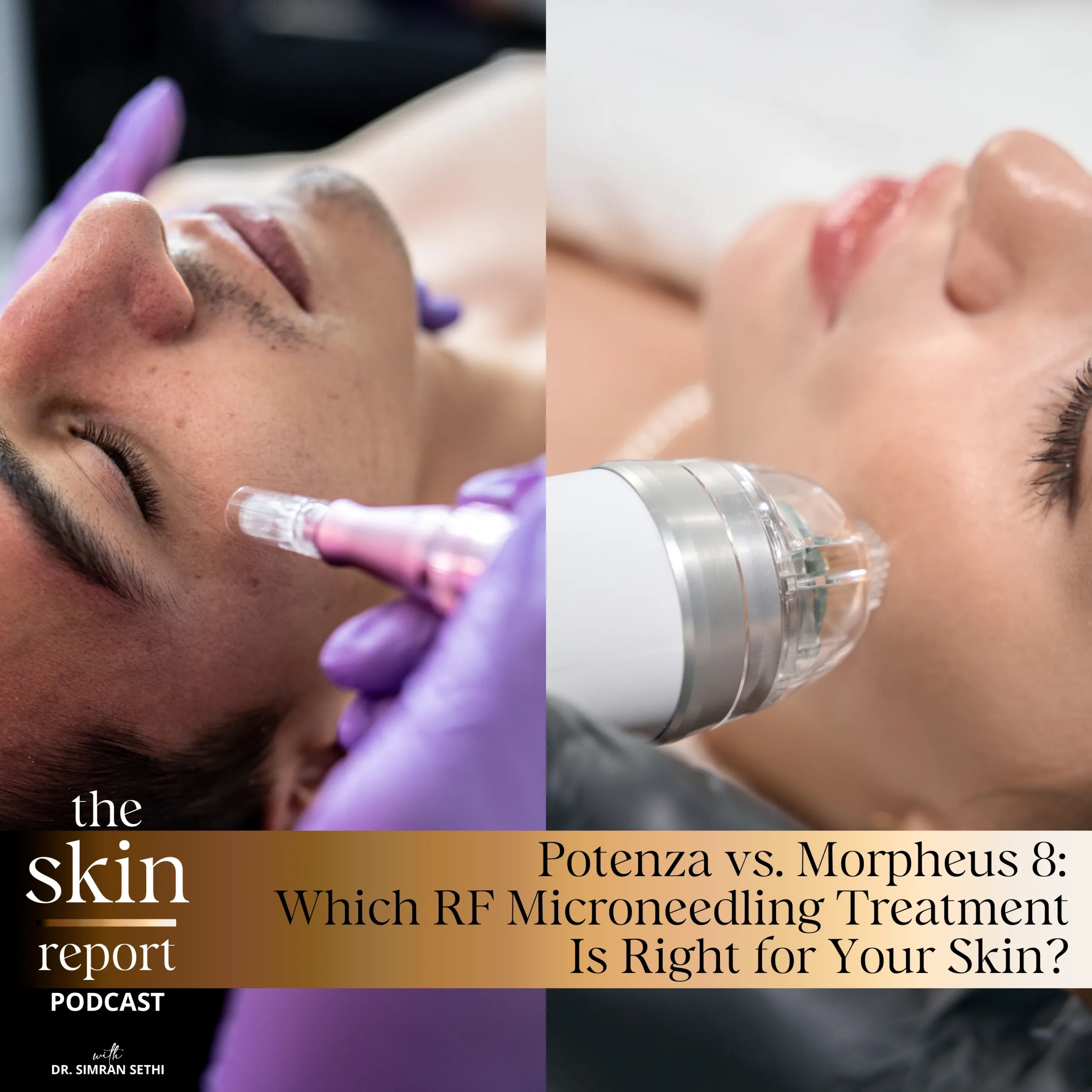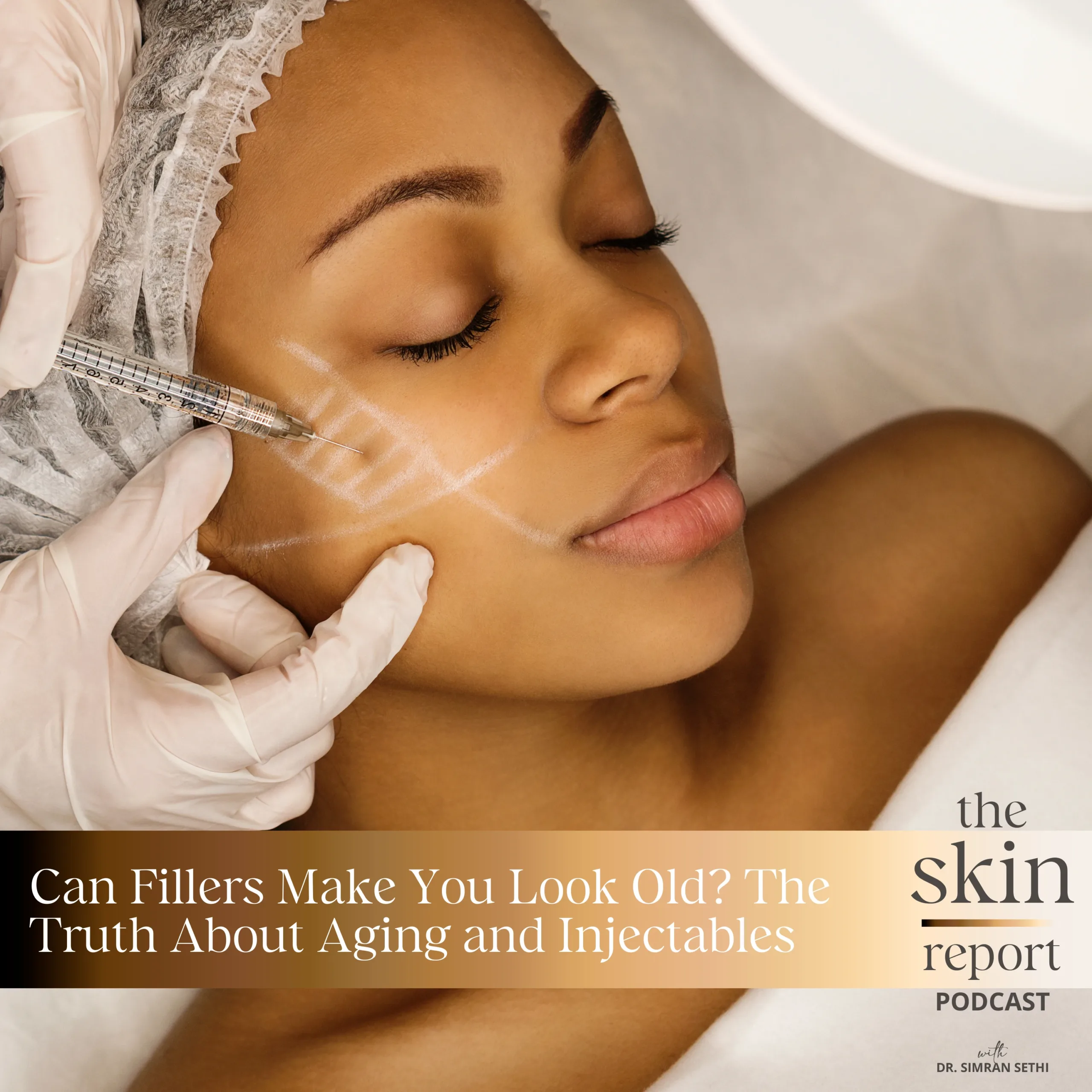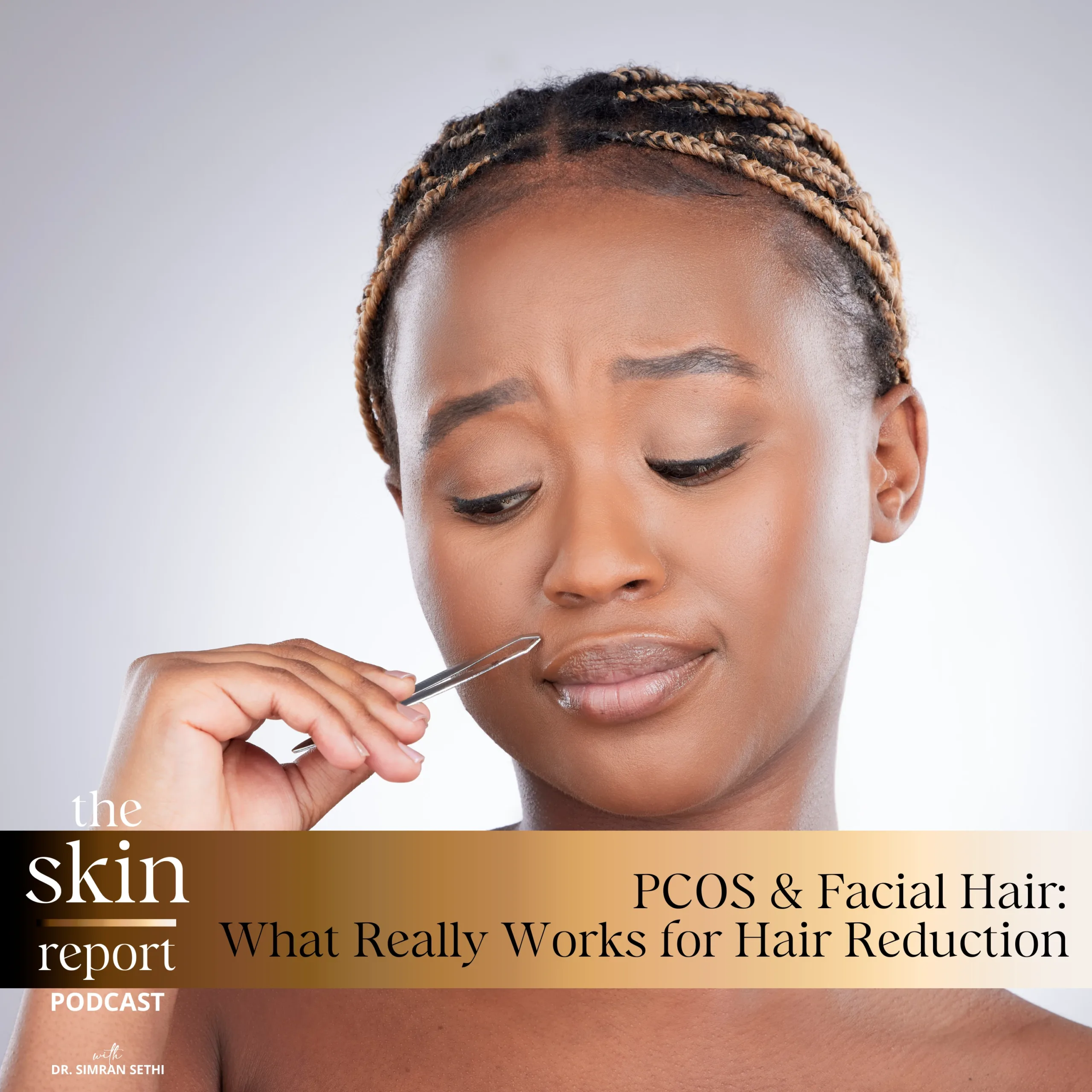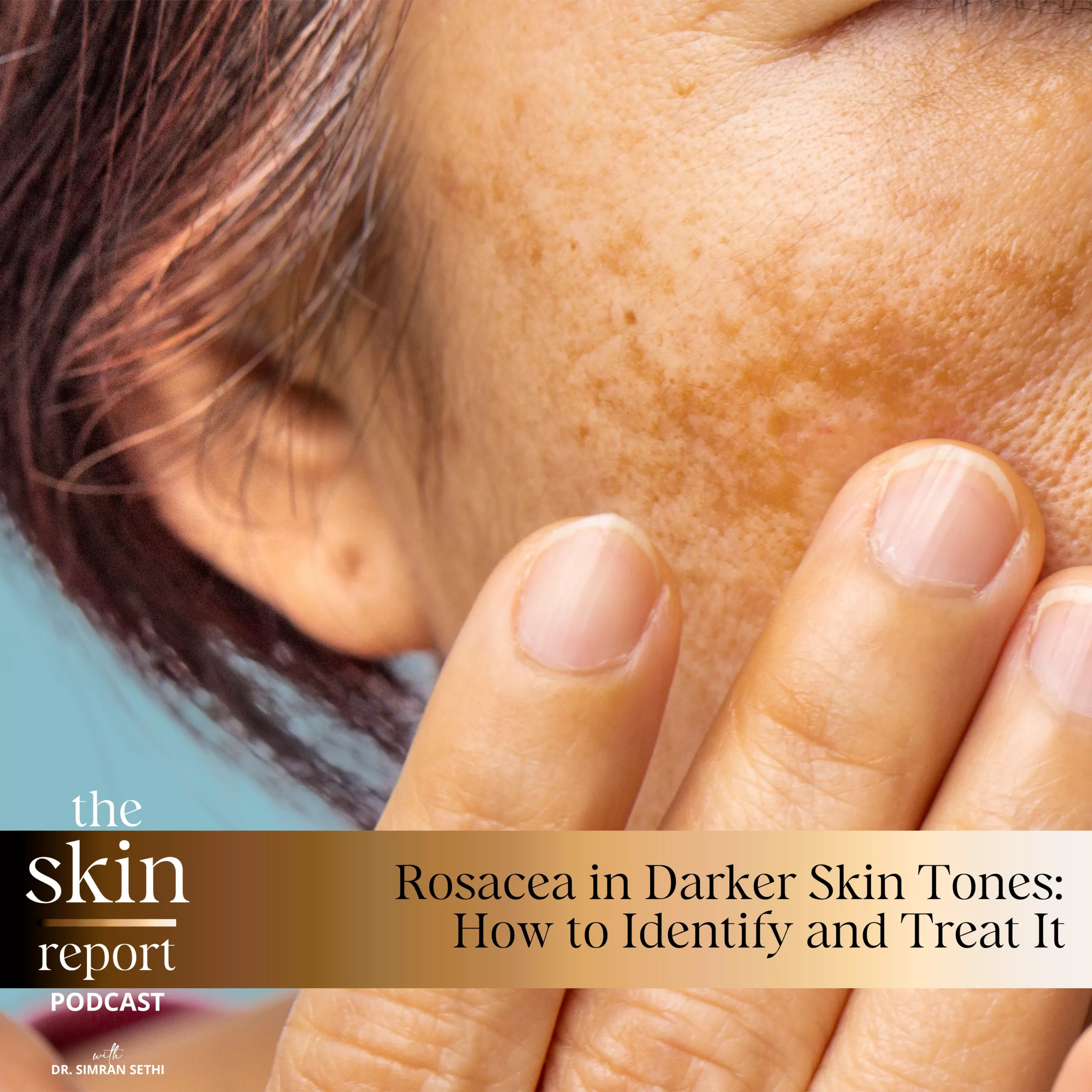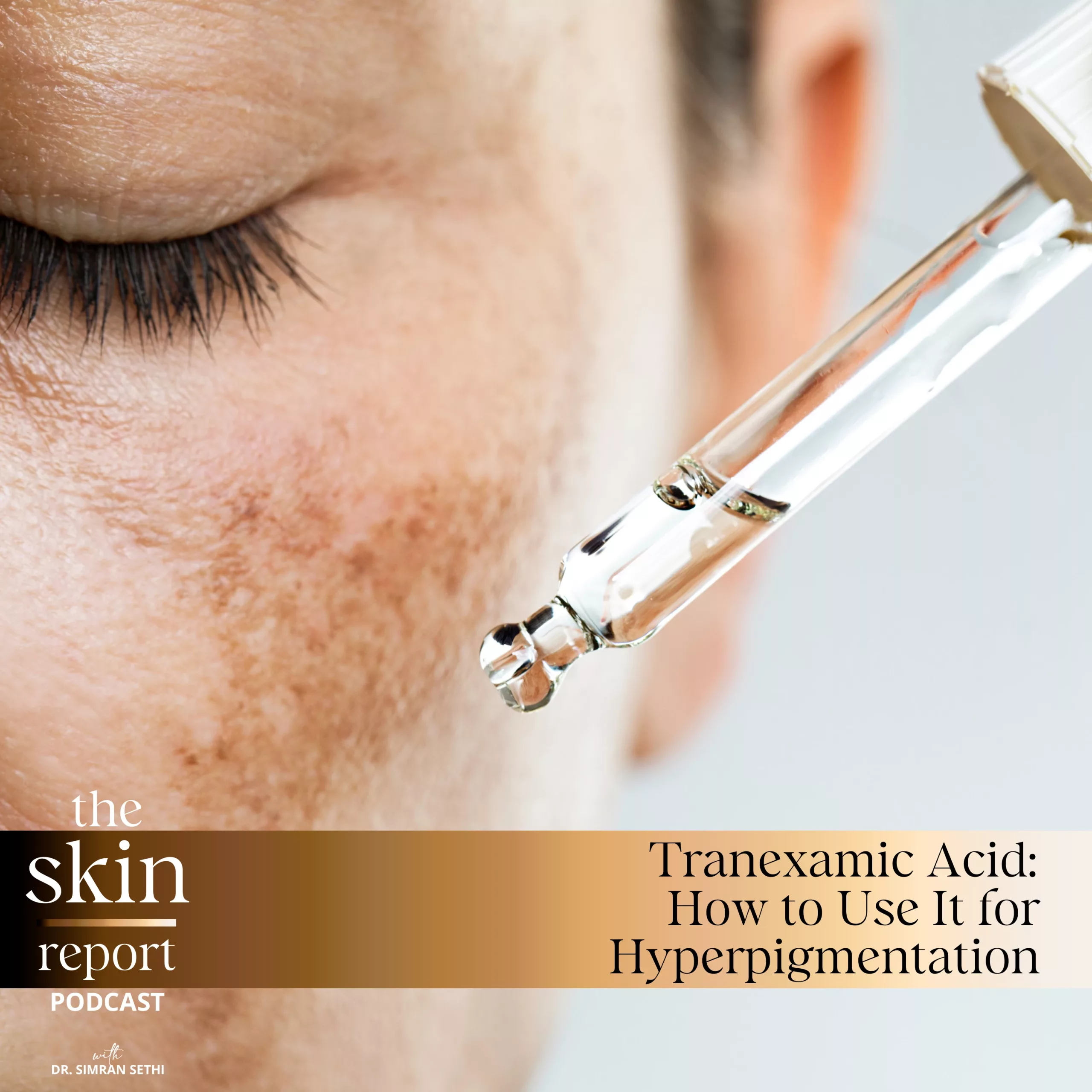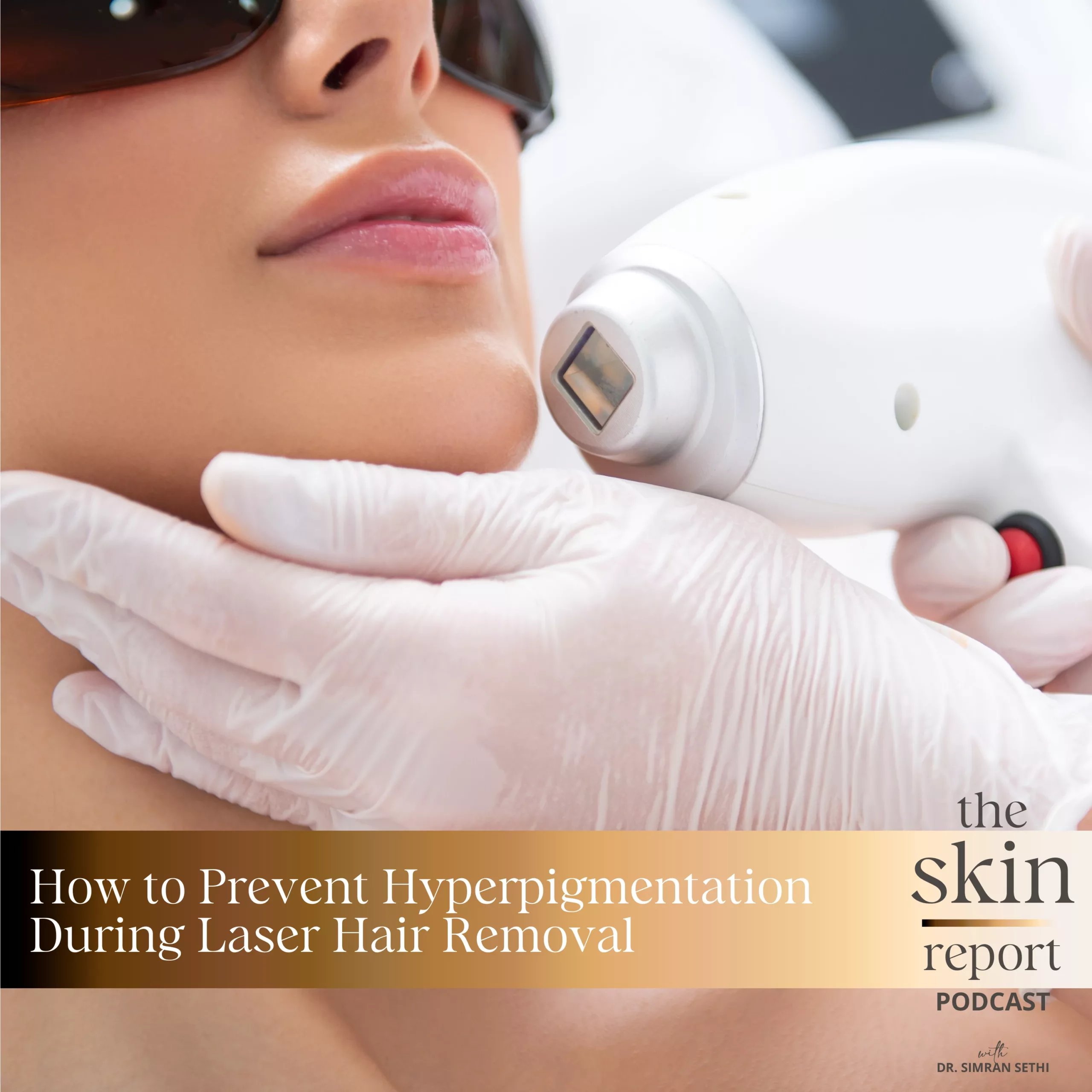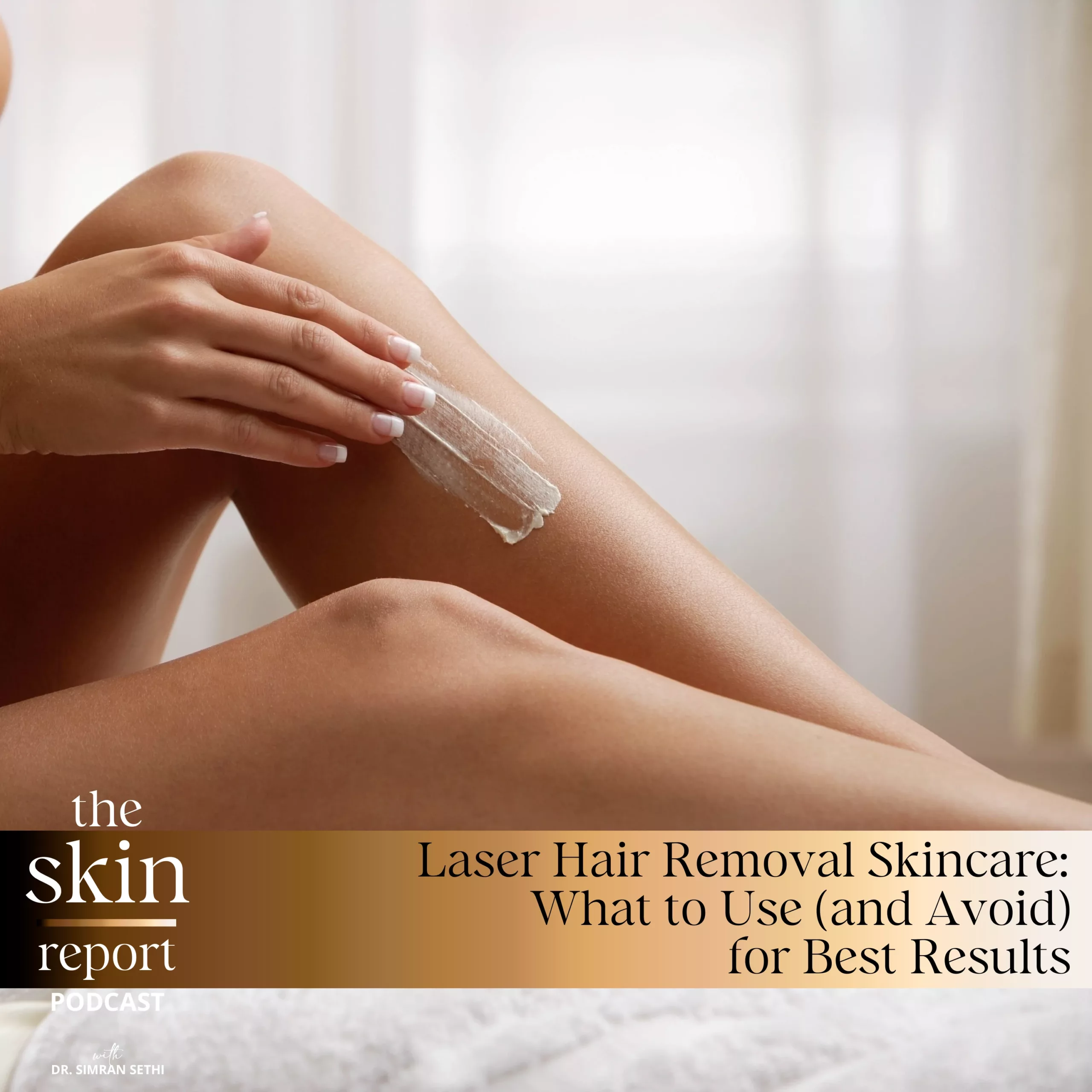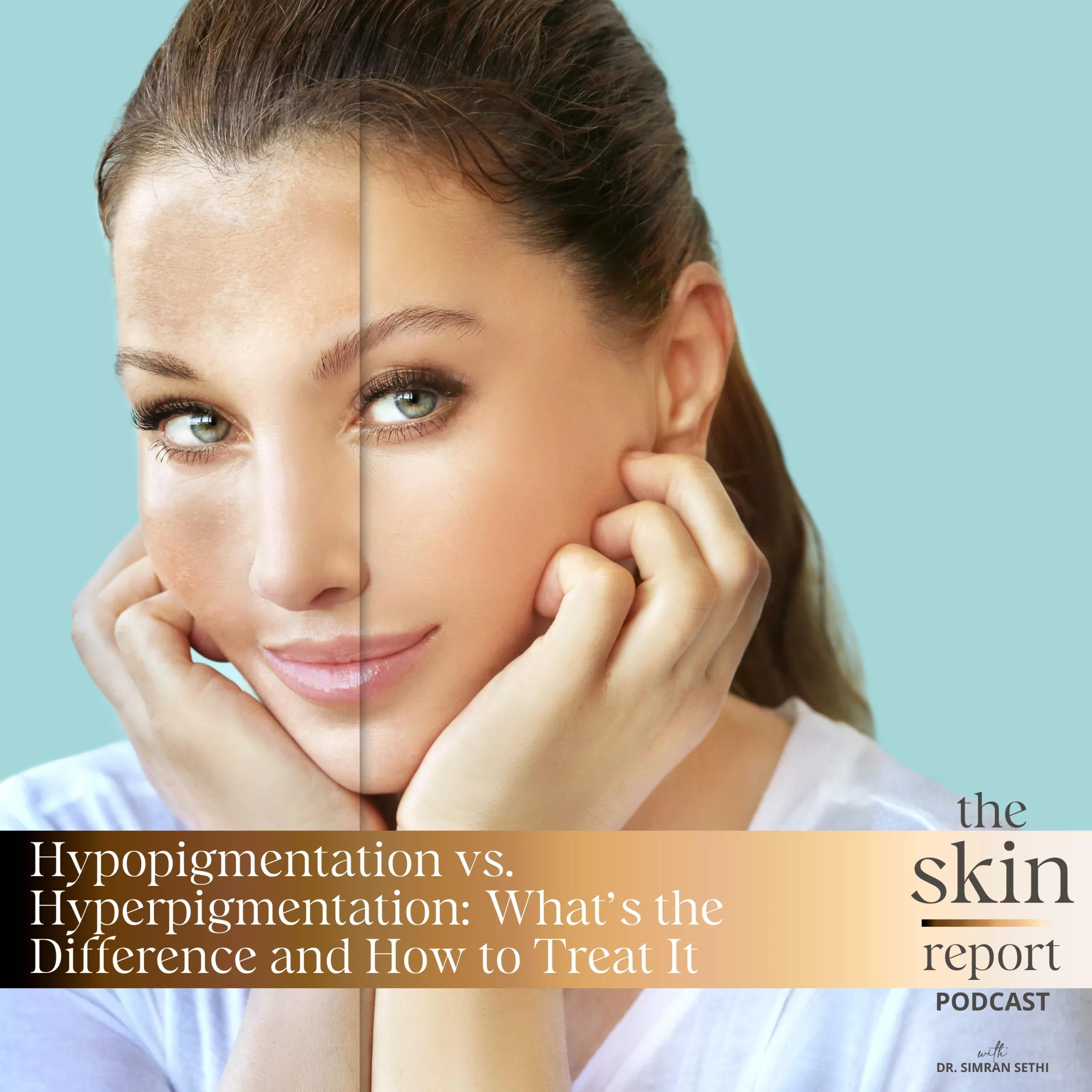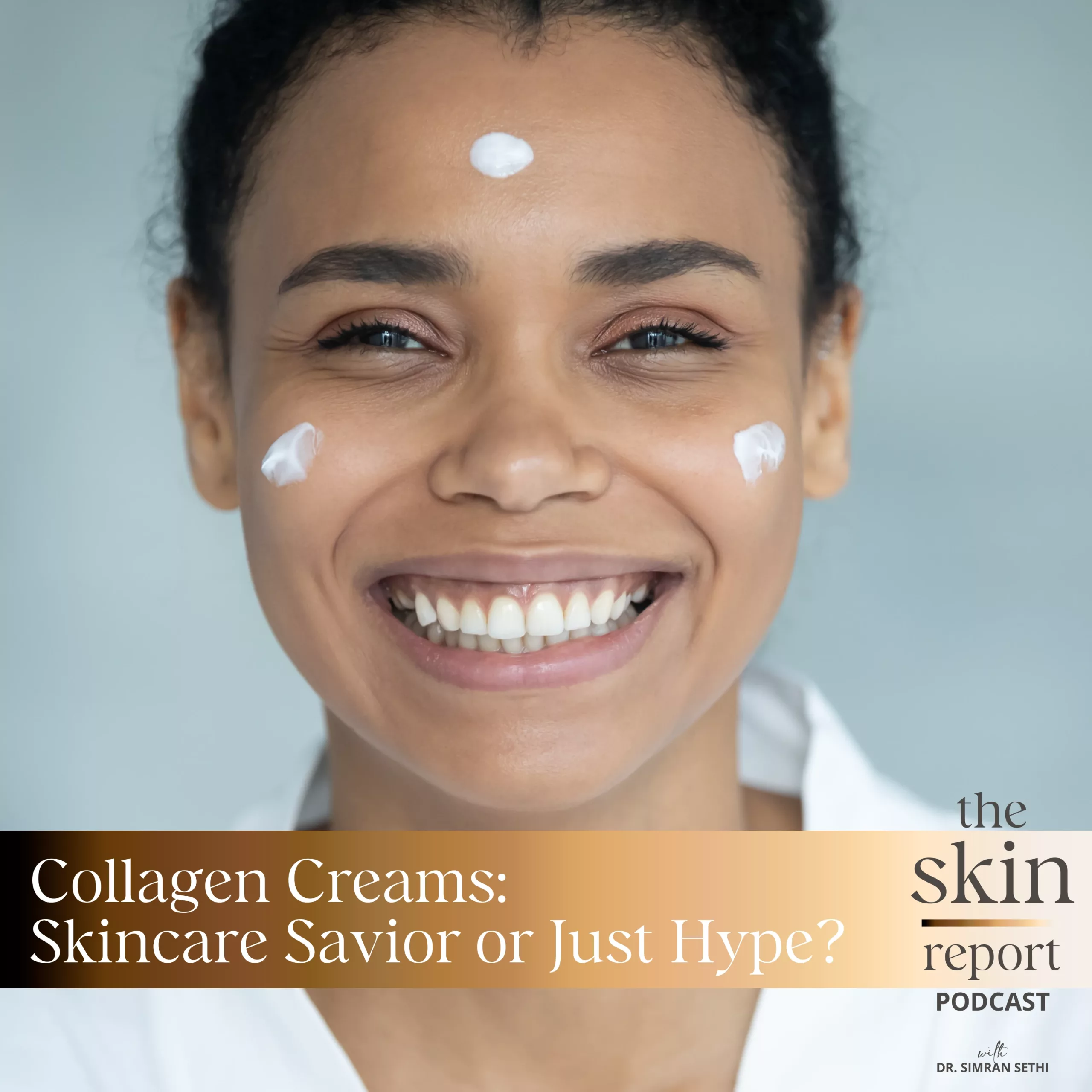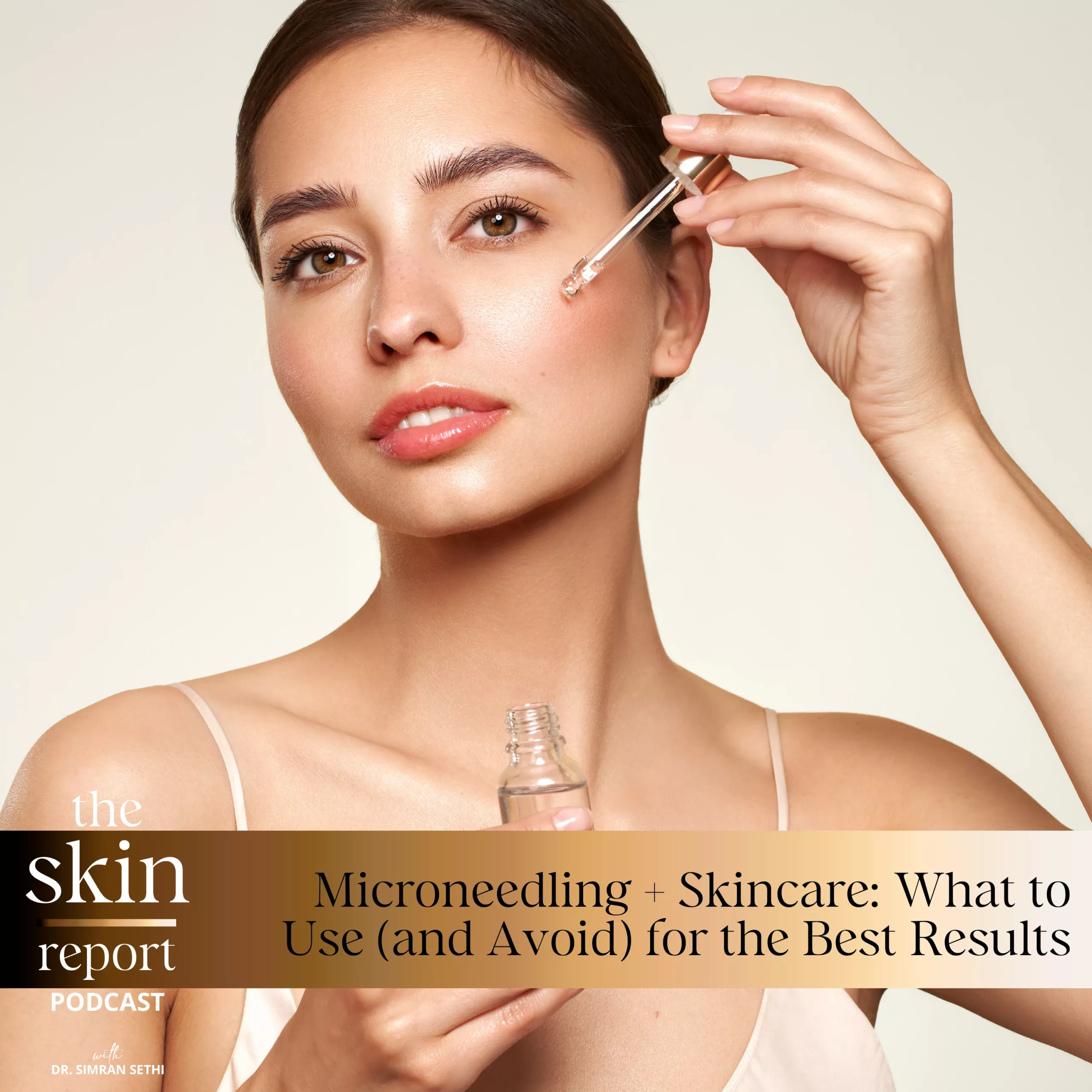Loving Yourself & Embracing Diversity
Our world consists of many different communities and cultures, each with its own unique standards of beauty. But while some beauty practices reference rich cultural ideals, other beauty standards can have damaging consequences.
In this episode of The Skin Report podcast, host Dr. Sethi sheds light on the complex subject of societal beauty standards and their impact on people’s skincare practices. Throughout the show, she discusses how different cultures consider physical traits to be beautiful. She breaks down the beauty ideals in Africa to South Asia and other regions, demonstrating the various standards held by different communities. In doing so, she acknowledges the damaging beauty standards developed due to colorism and explains the risks that they pose. Finally, Dr. Sethi highlights the importance of embracing diversity in beauty standards and skincare practices.
As the founder of RenewMD Beauty Medical Spas and a woman of color, Dr. Sethi is dedicated to spreading science-backed skincare information on The Skin Report. Check out this episode to learn more about cultural beauty standards and diversity in skin care practices.
Follow and DM a question for Dr. Sethi to answer on The Skin Report Podcast:
Renew Beauty Instagram:
https://www.instagram.com/renewmd_beauty/
RenewMD Beauty Medical Spas, California:
https://renewmdwellness.com/
Dr. Sethi on TikTok:
@SkinByDr.Sethi
Skin Barrier Repair Kit – Special Offer 20% off Promo Code: skinbarrier20
Skin By Dr. Sethi – 15% OFF for new customers: GLOW15
Valentines Day Special – 20% OFF Systems and Bundles + FREE Mystery Gift: VDAYGLOW20
SKIN Scan – Comprehensive Customized Skin Report
https://theskinreportbydrsethi.com/season-1-episode-18-the-skincare-industry-whats-not-working/
The Skin Report Podcast – Season 1 Episode 1: Exclusive Past, Inclusive Future
https://theskinreportbydrsethi.com/s1e1-exclusive-past-inclusive-future/
The Skin Report Podcast – Season 3 Episode 1: Cultural Ingredients: Nourishing Skincare for Every Background
https://theskinreportbydrsethi.com/season-3-episode-1-cultural-ingredients-nourishing-skincare-for-every-background/
The Skin Report Podcast – Season 2 Episode 4: IV Injections for Skin Brightening
https://theskinreportbydrsethi.com/season-2-episode-4-iv-injections-for-skin-lightening-skin-lightening-pt-1/
Art Institute Chicago – African Beauty through African Eyes
https://www.artic.edu/articles/1003/african-beauty-through-african-eyes
National Library of Medicine – African Perceptions of Female Attractiveness
https://www.ncbi.nlm.nih.gov/pmc/articles/PMC3483252/
World Health Organization – Elimination of mercury-containing skin lightening products
https://www.who.int/initiatives/elimination-of-mercury-containing-skin-lightening-products
MDPI – Spreading of Dangerous Skin-Lightening Products as a Result of Colourism: A Review
https://www.mdpi.com/2076-3417/12/6/3177
ScienceDirect – Body appreciation predicts better mental health and wellbeing. A short-term prospective study
https://www.sciencedirect.com/science/article/abs/pii/S1740144523000128
Taylor & Francis Online – Toxic content of certain commercially available fairness creams in Indian market
https://www.tandfonline.com/doi/full/10.1080/2331205X.2018.1433104?scroll=top&needAccess=true
Research and Markets – Skin Lightening Products Market- Global Industry Size, Share, Trends, Opportunity, and Forecast, 2018-2028FSegmented By Product Type, By Nature, By End Use, By Distribution Channel, By Region, Competition
https://www.researchandmarkets.com/reports/5759480/skin-lightening-products-market-global-industry?utm_source=GNE&utm_medium=PressRelease&utm_code=p4gt5m&utm_campaign=1838746+-+Global+Skin+Lightening+Products+Market+Report+2023%3a+Rising+Preference+for+Online+Shopping+Drives+Growth&utm_exec=jamu273prd
National Library of Medicine – Traditional and ethnobotanical dermatology practices in Africa
https://pubmed.ncbi.nlm.nih.gov/29908577/
National Library of Medicine – A Cross-Sectional Study of the Knowledge, Practice, and Attitude Towards Skin-Lightening Products Among the General Population in the Western Region of Saudi Arabia
https://www.ncbi.nlm.nih.gov/pmc/articles/PMC9946903/
This transcript was exported on February 14, 2024 -view latest version here.
Skincare can sometimes feel overwhelming. Whether it’s finding the right products, ingredients, or treatments, there’s a lot out there, but not always for people of African, Hispanic, Middle Eastern and Eastern South Asian descent. That’s why I set out to educate myself and others so that we can all feel beautiful in our skin. Hello and welcome back to The Skin Report. I’m Dr. Simran Sethi, an internal medicine doctor, mom of three and CEO and founder of RenewMD Medical Spas and Skin by Dr. Sethi. On today’s episode, I want to discuss a complex ideal surrounding skin tones and societal beauty standards and share the importance of embracing diversity and celebrating your own unique beauty.
We live in a large world made up of numerous cultures and subcultures ranging across geographic locations, religious practices, and even online communities. As a result of these varying cultural standards, many different schools of thought have emerged regarding what features, characteristics and practices contribute to beauty. Furthermore, each culture’s societal standards for beauty are constantly evolving and have been throughout history. These beauty standards have existed for centuries and with them are skincare methods that aim to nourish and enhance the skin’s beauty and health using organic resources. In caring for the skin’s natural biology, these traditional beauty practices celebrate natural beauty. However, today’s consumers are pressured to purchase products for skin lightening. According to a World Health Organization report, half of the population in South Korea, Malaysia and the Philippines uses skin lightening treatments. 40% of Chinese women regularly use skin lightening creams, and routine skin whitener use ranges from 25% in Mali to 77% in Nigeria in African countries.
So today I wanted to take listeners on a journey of self-love and what that means in terms of skincare that nourishes our natural skin renewal cycle regardless of societal beauty standards. And of course, this also means taking a closer look at how different cultural norms and societal pressures impact the choices that we make when it comes to beauty and skincare. From damaging trends like skin lightening to nourishing cultural skincare methods passed down through generations, we’ll consider practices from each side of the skin health spectrum. I hope you join us throughout this episode and that you walk away with a more educated perspective on cultural beauty standards and a deeper appreciation for the natural skin type, tone, and texture that makes you uniquely you. Throughout this episode, I want to discuss how different societies approach skincare based on their cultural beauty standards. But first, I think it’s important that we recognize the importance of celebrating diversity.
We will be discussing a lot of different cultures today with many different perspective on the concept of beauty, but in doing so, we will also be learning what it is to respect unique cultural beauty standards while acknowledging the benefit that can come from embracing natural beauty. We’ll discuss this concept more later on in the show. Now, let’s consider how different regions foster their own unique ideals surrounding beauty. Cultural beauty standards can be influenced by many different factors including the culture’s history, resources, values, and more. Let’s take a look at some cultural beauty standards that exist across the globe. In East Asia, beauty standards commonly celebrate features that are considered to be youthful, soft, and feminine. This has led the ideal beauty standard look to include narrow noses, round, large eye, a slim jawline, and pale skin.
Before continuing, I want to point out that pale skin is a recurring theme across many cultural beauty standards. I’ll discuss why this is and how it impacts cultural skincare practices later in the show. Now, the cultural beauty ideals in East Asian countries like South Korea can put a lot of pressure on people to alter their appearances in order to fit in with this mold. Cosmetic treatments have even become popular as a result such as masseter Botox for achieving a v-shaped face. Of course, an entire culture of people trying to achieve the same features can mean that many of these procedures cause patients to walk away with extremely similar appearances. And as more people opt for the same beauty procedures, we can see this reflected in the media. With K-pop stars and Miss Korea contestants all starting to have increasingly similar features, this begs the question, should cultural beauty ideals have such a powerful influence on society that people begin to lose their individuality?
Next, there’s India, where people take a different approach to their skincare and beauty practices. I’ve noticed through my practice that Indian beauty standards place a strong emphasis on skin. To adhere to India’s cultural beauty standards, people focus their skincare towards achieving skin that is clear, acne free, and yes, light. It’s also worth mentioning that India has a rich tradition of incorporating cultural organic remedies alongside modern treatments. To learn more about these remedies, check out my episode about organic cultural ingredients linked in the show notes. Other countries that value cultural identity through their beauty standards and practices include those in Africa. Cultural aspects like style play into the region’s perception of beauty, with unique hairstyles, adornments, and jewelry contributing to their beauty standards. Many of their skincare practices came from Africa’s use of botanical compounds in traditional medicine.
According to a study on African perception of female attractiveness, results found that factors like facial adiposity, youthfulness and skin homogeneity contribute to attractiveness. However, it’s also mentioned that African perceptions of attractiveness have begun to shift and they are beginning to show preferences that are inconsistent with traditional African values and are consistent with modern media and Western beauty ideals. This shift in standards is natural as beauty is a reflection of significant cultural events and society’s evolution. While traditional beauty methods and practices are more prioritized in some cultures than others, beauty standards are forever transforming.
Up next, let’s look more into the impact that cultural evolution and significant historical events can have on beauty standards. As we’ve discussed on the podcast before, skin lightening is a trend in many cultures across the globe and is primarily considered to be a byproduct of colonization. If you’d like to learn more about the history behind colonization’s influence on global beauty standards, check out the episodes on this topic that I’ve linked in the show notes. To summarize, colonization impacted many regions worldwide, resulting in their cultures placing a greater value on lighter skin tones. Unfortunately, skin lightening practices are often physically damaging to the skin and can even contradict the culture’s traditional values. And with all of the different factors that go into cultural beauty standards, we can observe how each region’s skincare practices have transformed differently through the merging of their traditional ideals alongside modern influences.
Take Asia, for example. In East Asia, regions like Korea, the culture’s pursuit of lighter skin tones can be attributed to their cultural ideals which have increased alongside modern advancements. In contrast, South Asian cultures associate lighter skin tones with beauty and social status, which can be attributed to the region’s history of colorism.This favor for lighter skin can be seen in the Bollywood industry, where fairer skin actors achieve more opportunities. In an effort to fit in with these societal beauty standards, women in India have popularized the use of IV skin lightening treatments using glutathione. Fortunately, glutathione is an antioxidant that is very safe when administered properly, with a low likelihood of side effects.
However, South Asian skin lightening techniques aren’t always safe. According to a 2017 study, an analysis of the four most commonly used brands of skin lightening creams in Kerala, India, showed that varying amounts of arsenic, lead, and mercury were present in each. As previously mentioned, African cultures are not impervious to the pressures of modern beauty standards or the long-lasting effects of colonization. As global beauty trends continue to uphold the desirability of lighter skin, African skin lightening practices continue to pose dangers to those who use them. Middle Eastern skin lightening trends can be attributed to Western beauty standards and media influencers. A significant trend we can observe here is the strong influence of celebrity endorsements that push the idea of lighter skin’s superiority. A 2023 study found that about a third of Saudi women engage in skin lightening practices.
As you can see, skin lightening practices exist among cultures worldwide, each resulting from a unique combination of external events, traditional values and societal developments. But regardless of the factors prompting the desire for lighter skin, skin lightening methods can be extremely damaging. Rather than celebrating diversity, these methods can pose health risk and promote harmful ideals surrounding natural beauty. Fortunately, many cultures have begun to shift their perspective on beauty to embracing natural characteristics, including natural skin tones. While this aligns us with a more inclusive beauty standard, embracing your natural skin can also benefit us significantly on an individual level. We’ll discuss this more coming up next.
Embracing your natural skin health has many benefits people miss out on when they change their skin tone to adhere to societal beauty standards. In choosing to accept and even love your natural skin tone, you can experience positive impacts on your mental and physical health. Let’s start with how loving your natural skin can provide physical benefits. In a world that places so much emphasis on skin tone, altering your skin so that it appears lighter can be tempting. However, neglecting to care for your skin properly can have serious consequences. Cultures across the globe have various skin lightening practices, which can pose health risks. These products contain substances that damage the skin to reduce its melanin content in order to lighten it, often producing severe dermatological health conditions in the process.
For example, the World Health Organization cited that skin lightening products can contain potentially harmful ingredients such as toxic mercury compounds. Mercury can have numerous health impacts, including damage to the nervous system and the kidneys. Dermatological health issues resulting from skin lightening practices are also common, especially with skin lightening products that include the ingredient hydroquinone. Use of these products can include irritant contact dermatitis, which is a common acute complication, whereas longer term effects may include exogenous ochronosis, a condition which involves localized hyperpigmentation of the skin with a blue-black and gray-brown discoloration.
Deciding not to undergo skin lightening treatments or methods can, of course, save you from the risk of damaging physical effects such as these. However, embracing your natural skin tone actually has numerous benefits for your skin health. Melanin pigment, which we all have various types and amounts of, makes up the color of the skin and is actually our skin’s superpower. People with a darker complexion have more of the eumelanin pigment that is very effective at protecting our skin from the damaging effects of UV radiation. This is exactly why people with skin types four through six don’t have a tendency to form wrinkles and skin sagging, which are essentially a sign of collagen breakdown from sun exposure, until late into their forties, while people with lighter skin tones do so in their thirties. This is also why skin cancer is less common in darker skin tones because they have the advantage of a very protective amount of eumelanin in their superficial skin layer, fighting off the cancer-causing effects of sunlight.
There are many ways that you can choose to embrace your natural skin tone through the conscious choices you make in caring for your skin. Rather than lightening your skin tone, choosing methods that nourish and protect your skin’s natural melanin production can result in a beautiful, even toned and radiant complexion. Our skin reflects our health and by caring for your skin’s natural biology, its outward appearance will shine. Furthermore, many practices that nourish the skin’s natural melanin production improve other aspects of your skin’s health too. For example, caring for your natural skin barrier with rich lipid-based moisturizers ensures natural levels of melanin production while providing the hydration and protection your skin requires. Skincare means caring for your skin as a whole, not choosing only certain aspects to nourish, and by providing care for your natural skin cell turnover, barrier function, and melanin production, your skin’s overall health and beauty will shine through.
Finally, accepting and caring for your natural skin means accepting and caring for yourself. Working to nourish your body can help you recognize the positive impact of your hard work and self-love. Positive body image can significantly benefit one’s self-esteem and overall mental health. In a study on prospective relations between body appreciation and the measures of mental health and well-being, body appreciation was shown to predict decreased depressive symptom and increased self-esteem, flourishing and well-being. Self-love is empowering and fosters a sense of pride and self-satisfaction.
The path to a more inclusive future may seem far right now, as it would involve dismantling the long-held beauty standards that have marginalized skin of color. But the actions that we take today inspire the culture of tomorrow. The first step to challenging these harmful beauty standards is to embrace your own natural skin tone while also recognizing that melanin is actually the best way your skin protects you from the harmful effects of the environment and aging. Prioritizing natural skin beauty is beneficial for your mental and physical health, while also helping to shift the narrative from conforming to societal beauty standards to supporting the unique beauty of people of all shades and colors.
I hope today has given you a lot to think about when it comes to skincare, skin culture, and embracing your own unique beauty. And keep listening to The Skin Report as I continue to create content with the intention of educating, encouraging, and inspiring listeners to love themselves, one episode at a time. Thank you for tuning into this episode of The Skin Report Podcast. Until next time, love your skin, love yourself, and celebrate your beauty.
If you’d like to learn more about science-backed skincare or medical aesthetic treatments, please subscribe to and turn on notifications for The Skin Report so you always know when a new episode is up. We have a newsletter that you can sign up for on skinbydrsethi.com so that you can stay up to date on all our latest products and more. Additionally, if you have a skincare question or want to make an episode topic recommendation, please message me at theskinreportbydrsethi.com, which is linked to my show notes and I’ll be sure to answer your question in an episode soon.
Transcript by Rev.com


